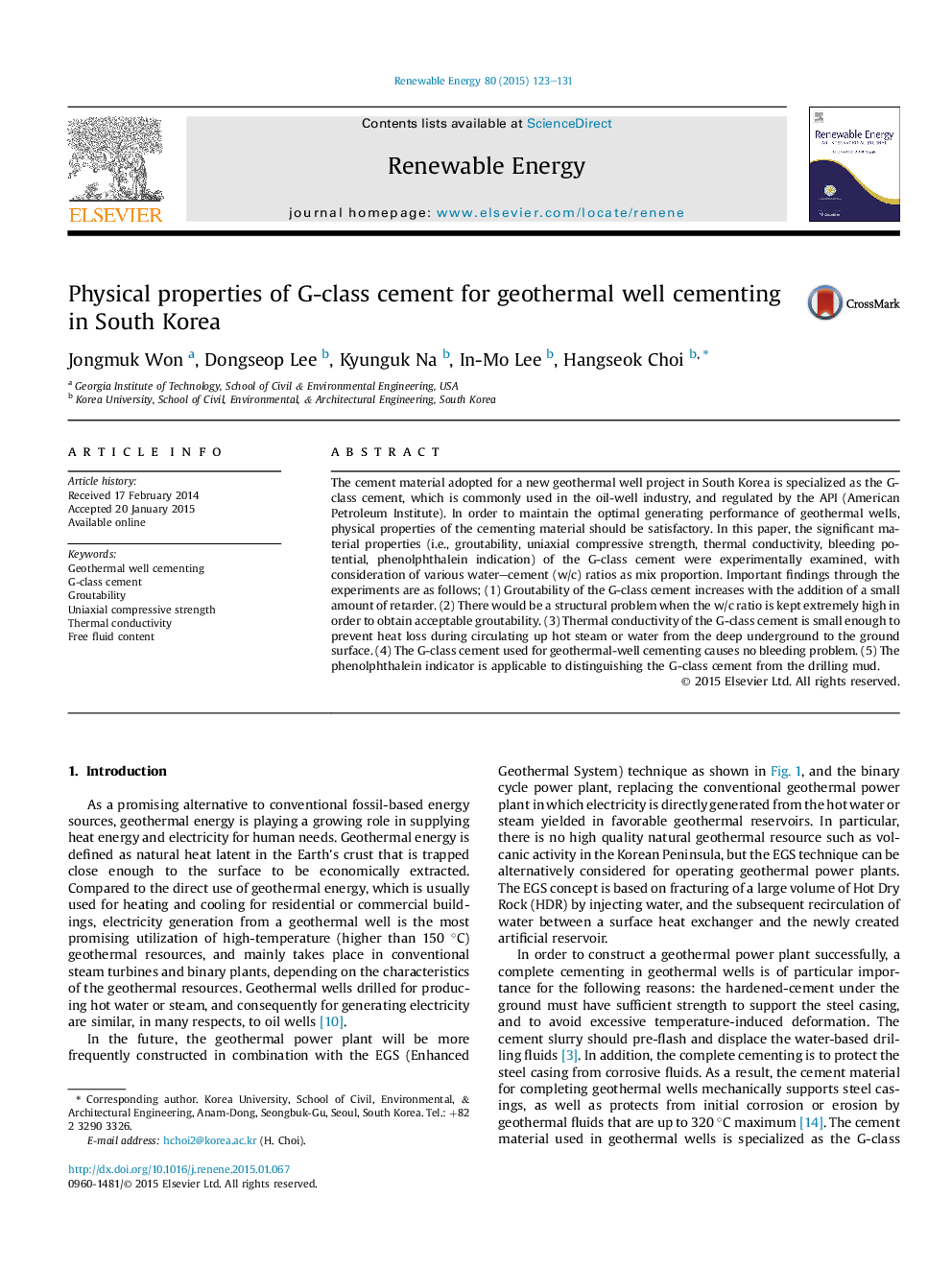| Article ID | Journal | Published Year | Pages | File Type |
|---|---|---|---|---|
| 6767036 | Renewable Energy | 2015 | 9 Pages |
Abstract
The cement material adopted for a new geothermal well project in South Korea is specialized as the G-class cement, which is commonly used in the oil-well industry, and regulated by the API (American Petroleum Institute). In order to maintain the optimal generating performance of geothermal wells, physical properties of the cementing material should be satisfactory. In this paper, the significant material properties (i.e., groutability, uniaxial compressive strength, thermal conductivity, bleeding potential, phenolphthalein indication) of the G-class cement were experimentally examined, with consideration of various water-cement (w/c) ratios as mix proportion. Important findings through the experiments are as follows; (1) Groutability of the G-class cement increases with the addition of a small amount of retarder. (2) There would be a structural problem when the w/c ratio is kept extremely high in order to obtain acceptable groutability. (3) Thermal conductivity of the G-class cement is small enough to prevent heat loss during circulating up hot steam or water from the deep underground to the ground surface. (4) The G-class cement used for geothermal-well cementing causes no bleeding problem. (5) The phenolphthalein indicator is applicable to distinguishing the G-class cement from the drilling mud.
Related Topics
Physical Sciences and Engineering
Energy
Renewable Energy, Sustainability and the Environment
Authors
Jongmuk Won, Dongseop Lee, Kyunguk Na, In-Mo Lee, Hangseok Choi,
